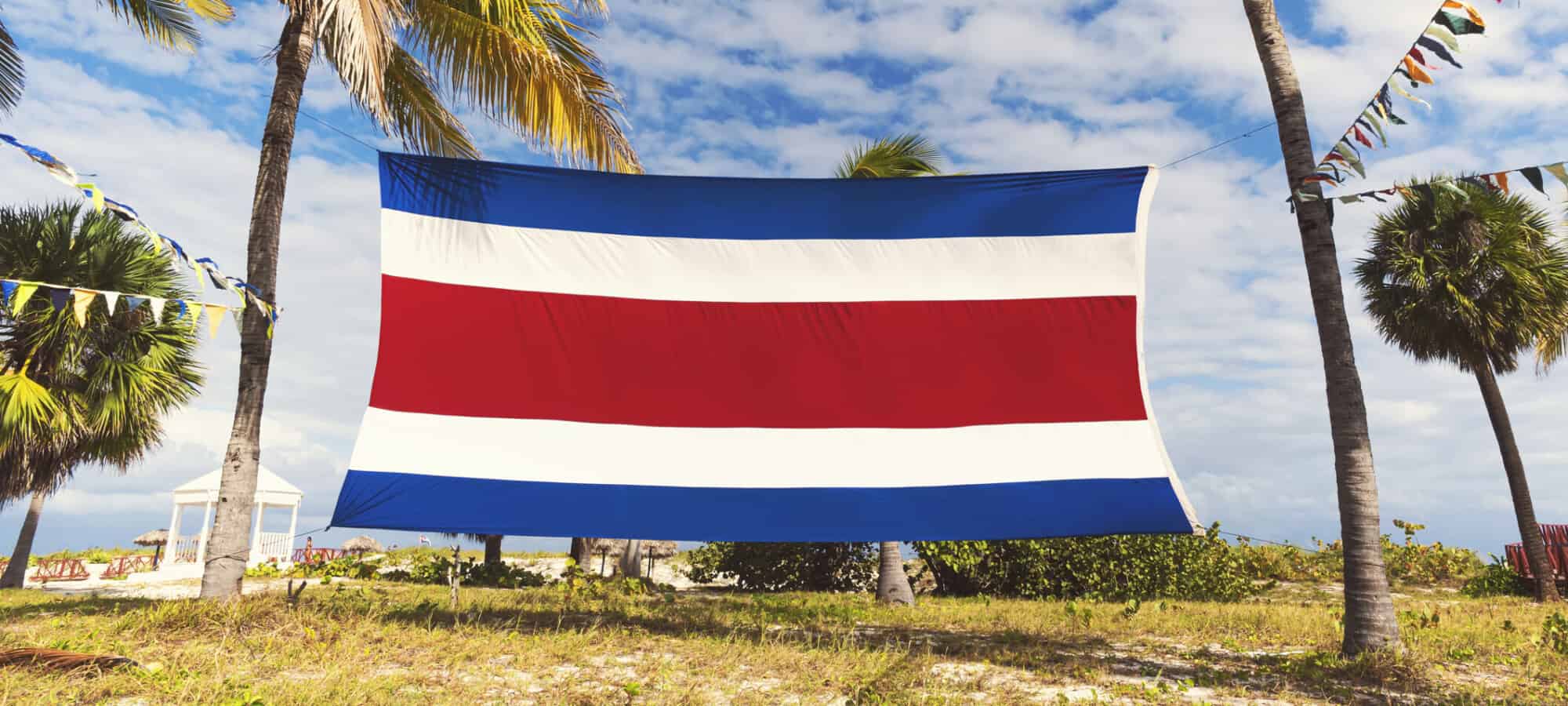Looking for a new market for your product? Exporting to Belize could present the opportunity you are looking for.
It may be small in size (23,000 square km) and population (400,000), but not in the potential it offers exporters
Belize is a major tourist destination, has big infrastructure plans, and a growing expat population. Taking all this into consideration, exporting to Belize could be a very lucrative business venture with the right goods and products.
Let our team of experts help you get jump-started, the right way, when shipping to Belize. With an extensive knowledge of the Belize culture and customs demands, we are capable of getting your goods to market headache-free
Business opportunities to consider when exporting to Belize
Belize presents many opportunities for U.S., Canadian, and European exporters
- Bordering Mexico to the north and east, exporters can take advantage of its beneficial location, fascinating history, and beautiful Caribbean coastline.
- It is also the only predominantly English-speaking country in Central America. This can help you build business relationships and better navigate the export process.
- Once a U.K. overseas territory, it maintains its close links to the country as part of the Commonwealth. Alongside the U.S, the U.K. is one of Belize’s main export partners.
Belize’s Free Trade Agreements
Belize is commonly thought of as a Caribbean country in Central America because they share a similar history. This relationship can be seen through its membership in the Caribbean Community and Common Market (CARICOM).
Established in 1973, it brought together 20 developing countries as a political and economic community to encourage economic growth and free trade between the members.
Through CARICOM, Belize is part of the EU-CARIFORUM Economic Partnership Agreement. Through this agreement, the Caribbean countries have full and free trade access to the markets of European member states. Meanwhile, duties on goods imported into the Caribbean from Europe will be gradually eliminated by 2033.
While there is no free-trade agreement between the U.S. or Canada and Belize, don’t be discouraged. There is considerable desire for North American consumer products thanks to Belize having a higher cost of living and a more skilled labor force than other Central American countries.
There is also a captive and growing market of North American expats to tap into. Many have been attracted to Belize’s retiree program – considered one of the best in the world. It gives eligible people tax exemptions on all income derived from sources outside Belize.
Key sectors for exports to Belize
With its renowned beaches, reefs, and coastal activities, tourism is Belize’s most important industry making it ripe for vacation-related exports. According to the World Travel and Tourism Council (WTTC), in 2017, tourism, directly and indirectly, accounted for 41.3% of Belize’s Gross Domestic Product (GDP).
Other key sectors for investment and trade opportunities, according to the Belize Trade and Investment Development Service (BELTRAIDE), are:
- Agriculture
- Agro-processing
- Aquaculture
- Logistics
- Light manufacturing
- Food processing and packaging (particularly non-plastic and biodegradable)
- Offshore business process outsourcing (BPOs)
- Renewable energy
Top exports to Belize
Like other Central American countries, fuels top Belize’s import list. Similarly, its exports are mainly food-led, including sugar, bananas, and fruit juice.
According to the United Nations COMTRADE database, compiled by Trading Economics, the top exports to Belize in 2021 were:
- Mineral fuels, oils, and distillation products ($134M)
- Machinery and mechanical appliances ($113M)
- Electrical, and electronic equipment ($54M)
- Tobacco and manufactures tobacco substitutes ($52M)
- Vehicles, recreational boats, and yachts ($45M)
- Plastics ($40M)
- Iron and steel ($38M)
- Articles made of iron or steel ($38M)
- Chemical products ($32M)
- Footwear ($31M)
Exports to Belize are dominated by the U.S. It was responsible for more than a third of the country’s imports (36.5%) in 2021, worth $359m. China and Mexico are also significant players, accounting for 14% of Belize’s imported goods in 2021.
Belize’s export destinations are more broadly spread. Other key importers were the U.K. (17%) and the U.S. (16.8%)
Challenges to consider when exporting to Belize
Belize is a fascinating market, with many factors to commend it to potential exporters. But before you commit, you will need to be aware of potential business challenges:
- Its small consumer base makes it one of the least competitive markets in Central America and the Caribbean
- There are a multitude of tariffs for imported goods, including sales tax and environmental tax
- There are no free trade agreements between the U.S, Canada, and Belize
- Import duties can range from zero to 120%
- Poor and limited road infrastructure, though investment is ongoing
- A stable but fragile financial system
- Corruption and transparency issues
- Expect bureaucratic delays for regulatory and legislative issues
Import restrictions and prohibitions
Generally, the list of prohibited goods for Belize should not throw up many surprises. However, restricted goods can be a little more complex. If you are in any doubt about your products, you may benefit from the advice of a customs broker.
Prohibited goods into Belize include:
- Products containing the stimulants ephedrine and pseudoephedrine
- Certain animals to prevent the introduction and spread of disease
- Disguised firearms and flick knives
- Indecent or obscene material
- Certain pesticides
- Pipes or other utensils connected with smoking opium
Some imported goods are subject to a licensing and permit regime to protect Belize’s domestic industries. There may be quantity restrictions on agricultural products or even a ban if there is a domestic surplus.
Restricted items include:
- Peanut butter, jam, and jellies
- Pasta, wheat, flour, and rice
- Alcohol
- Carbonated beverages
- Cigarettes
- Wood products
- Pharmaceutical medicines
- Pesticides
- Telecommunication equipment
- Certain gases and chemicals considered harmful to the environment
- Fuel
To review the complete list of prohibited and restricted goods to Belize, consult the official ‘Belize Customs and Excise’ list published on their website.

Port of Belize Ltd. is the country’s main port, located south of Belize City. Copyright: Port of Belize Ltd
Export to Belize: Customs clearance
Despite the documentation requirements for imports to Belize being similar to those for other Central American countries, the tariff system can be more complicated.
This guide intends to introduce you to the system. However, you may still need the help of a customs broker to ensure that you receive guidance specific to your product.
Customs Duties
If you are considering exporting goods to Belize, there are several tariffs to factor into your business planning.
Belize’s tariff schedule is based on the Caribbean Community’s (CARICOM) Common External Tariff (CET). And unlike other Central American countries, there is no free trade agreement between Belize and the U.S. and Canada.
This means that the majority of products will be subject to import duties. These generally range from zero – for some food products and medicines – to 45%.
The average rate for commodities and industrial goods is 20%. Duties of 45% apply to certain automobiles, live animals, boats, peppers, and pepper sauces. For luxury items like SUVs, alcohol, and cosmetics, you could face duties between 70 and 120%. The same is true for products competing with those made domestically.
In addition, there are other taxes for you to consider. Environmental tax is commonly 3% on imports, with some cars subject to 5%. The 12.5% General Sales Tax applies to most goods.
Imports from CARICOM countries are exempt from import duties, but some commodities may be subject to Revenue Replacement Duty (RRD), averaging 40%
Visit Belize Customs & Excise to learn more about customs duties in Belize
Import requirements and documentation
If you already export to countries in Central America, the documents required for Belize are nothing out of the ordinary. Among the most common are:
- Commercial invoices
- Import permits – for certain foodstuffs, live animals, plant and plant materials, and veterinary vaccines. These are issues by the Belize Agricultural Health Authority (BAHA)
- Phyto-sanitary certificates
- Zoo-sanitary certificates
- Health-risk analysis documentation
- Certificates of Origin – for animals and certain plant materials.
Encouragingly there are generally few labeling requirements over and above what you would need for domestic sales in the U.S. and Canada. However, there may be a few additional demands depending on your goods for export.
- Food labels on all processed food products must be in English. There is set information to include, such as storage instructions and expiration date. Generally, the Belize authorities accept labels that meet U.S., Canada, CARICOM, and E.U. standards.
- Be aware of specific labeling requirements for certain dairy, alcohol, and tobacco products, as well as cosmetic and pharmaceutical products.
You may want to speak to a customs broker to ensure you meet the necessary certification and labeling regulations.
Modes of transportation to and within Belize
Belize is the smallest and least populated country in Central America. As a result, it has few major transportation hubs – two main ports and one international airport.
Maritime Facilities
Land-locked by Guatemala and Mexico to the west, its oceanic trade is via its Caribbean coast. Its principal port for imports and exports is located in Belize City. It can handle containers, breakbulk, tankers, ro-ro cargo, and cruise ships.
Belize’s second port is Big Creek (Cala Grande), built in the 1990s. It is a key facility for Belize’s agricultural and oil exports.
Airport infrastructure
In terms of air freight, Philip S.W. Goldson International Airport is the main hub. It serves Belize’s largest city, Belize City, and is the fifth busiest airport in Central America.
Road network
There are five major highways in Belize. These include the Philip Goldson Highway between Belize City and the Mexican border and the George Price Highway between Belize City and the Guatemalan border.
Generally, Belize’s road infrastructure is poor and very limited. It is also vulnerable to damage during the rainy season.
The Belize government and international agencies recognize that poor infrastructure hinders the movement of goods and people and the country’s economic competitiveness, regional integration, and tourism potential. As a result, significant progress is being made.
The OPEC International Development Fund is part-financing several projects to bolster and expand existing infrastructure.
This includes funding to improve the stretch of road that links George Price highway with the Caracol Archaeological Site – one of Belize’s most important tourism areas.
Meanwhile, the entire stretch of the 85km Hummingbird Highway is set to be reconstructed to provide a regional road network between Belize’s capital Belmopan and Dangriga town.
Rail transport
Finally, it is worth knowing that Belize has no operational railroads – something it shares with most Central American countries.
Export to Belize now!
Excited by the opportunities Belize offers? We can help you get started in a whole new export market.
We can offer you a range of stress-free freight forwarding services to meet your needs, including size, time, and budget.
Latin American Cargo is your specialist Belize logistics partner. Contact us today!


 LAC Team
LAC Team


